With the reopening of the San Francisco Museum of Modern Art just around the corner, future museum-goers are naturally inclined to wonder about certain things. Online, SFMOMA’s frequently asked questions page answers factual queries like “When will SFMOMA reopen?” (Answer: May 14), as well as more emotional pleas like “Why is it necessary to replace the original staircase in the museum’s atrium?” (The simple answer: building codes.)
After a three-year closure to increase its gallery space by 100,000 square feet, an updated SFMOMA FAQ provides visitor guidelines on general information like breastfeeding (go for it), parking (good luck) and protests (nope), along with an extensive list of ways to get immediately ejected from SFMOMA.
FAQs exist to save an entity time spent answering the same question over and over again. And the type of question asked over and over again is rarely very interesting — though it does tell us something about the museum’s audience and their heartfelt attachment to the Botta building’s original stairs.
To truly get into the nooks and crannies of an institution, what you really need is a set of infrequently asked questions. And so I present to you, SFMOMA’s future visitors, answers to the questions you didn’t even know you wanted to ask.
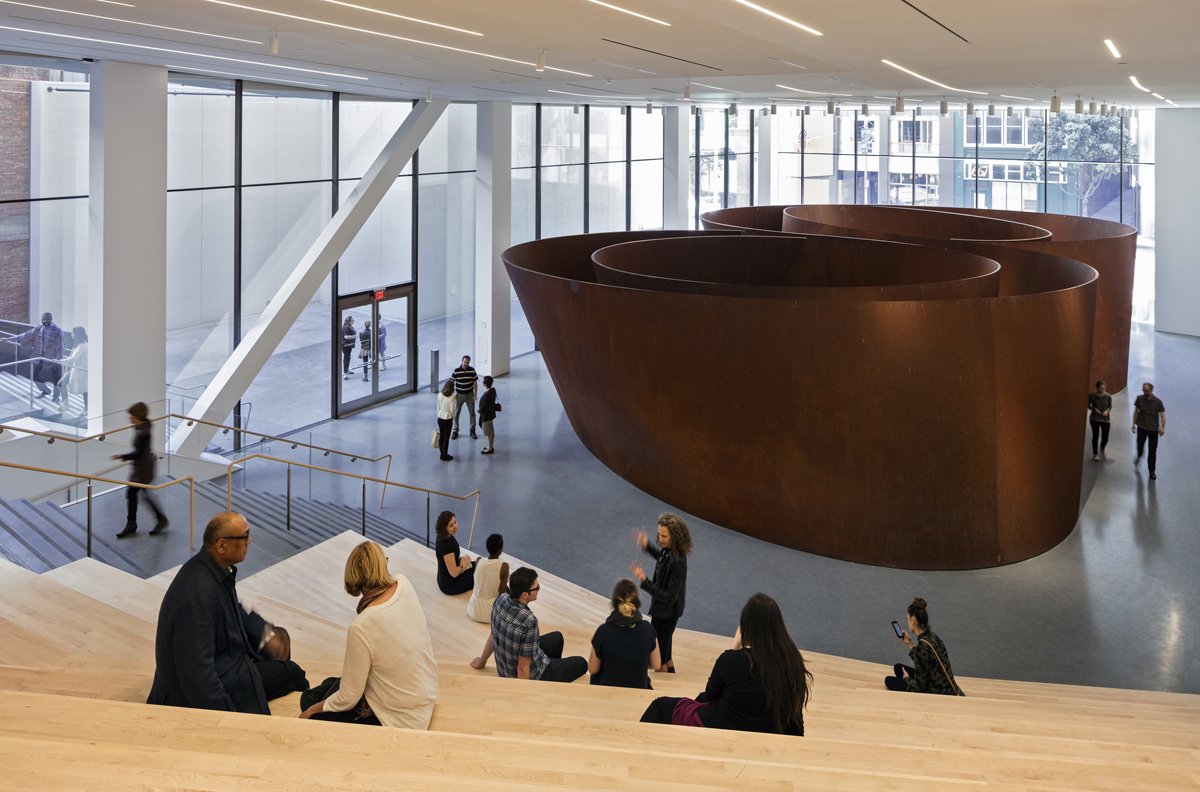
How can I visit the museum for free?
Oh, you cheapskates after my own heart, this is your perennial question. SFMOMA’s admission is now $25 for the average adult, instead of the $18 of yesteryear (this reflects a trend). But another update is that anyone 18 and under can now enter the museum for free. So the easiest way to visit SFMOMA without paying is to be a teenager.
If your teen years are a distant memory, it might help if you work for the Gap, or another company with a corporate membership at the museum. Ask your employer today!
And if you’re averse to dropping any money at all into SFMOMA’s coffers, you can hang (with wi-fi!) in any of the public spaces on the museum’s first and second floors and see a bit of art for free: a massive Alexander Calder mobile, Richard Serra’s hulking Sequence and a cheery Sol LeWitt, Wall Drawing 895: Loopy Doopy (white and blue). Soon, two Julie Mehretu murals will join the mix in the Botta atrium. How’s that for bucking the system?
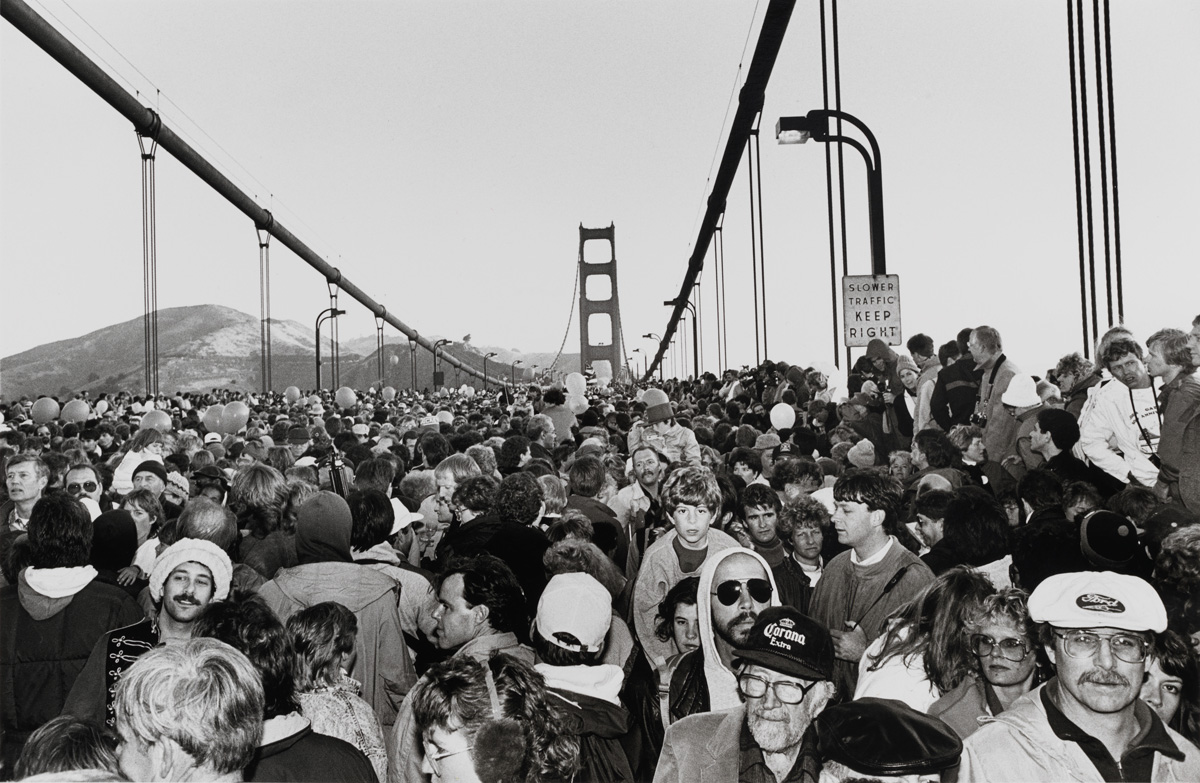
I only have an hour to spend in the museum. What should I see?
Off the bat, that time limitation is a travesty. Give yourself a full day, people. For local museum-goers, do the math and see if it’s worth it to invest in a $100 membership, which pays for itself after just four visits.
The museum guide lists a series of ten “Director’s Picks” from Neal Benezra himself. The greatest hits are all there, but I’d recommend just a few other must-see highlights within the museum’s 19 opening exhibitions:
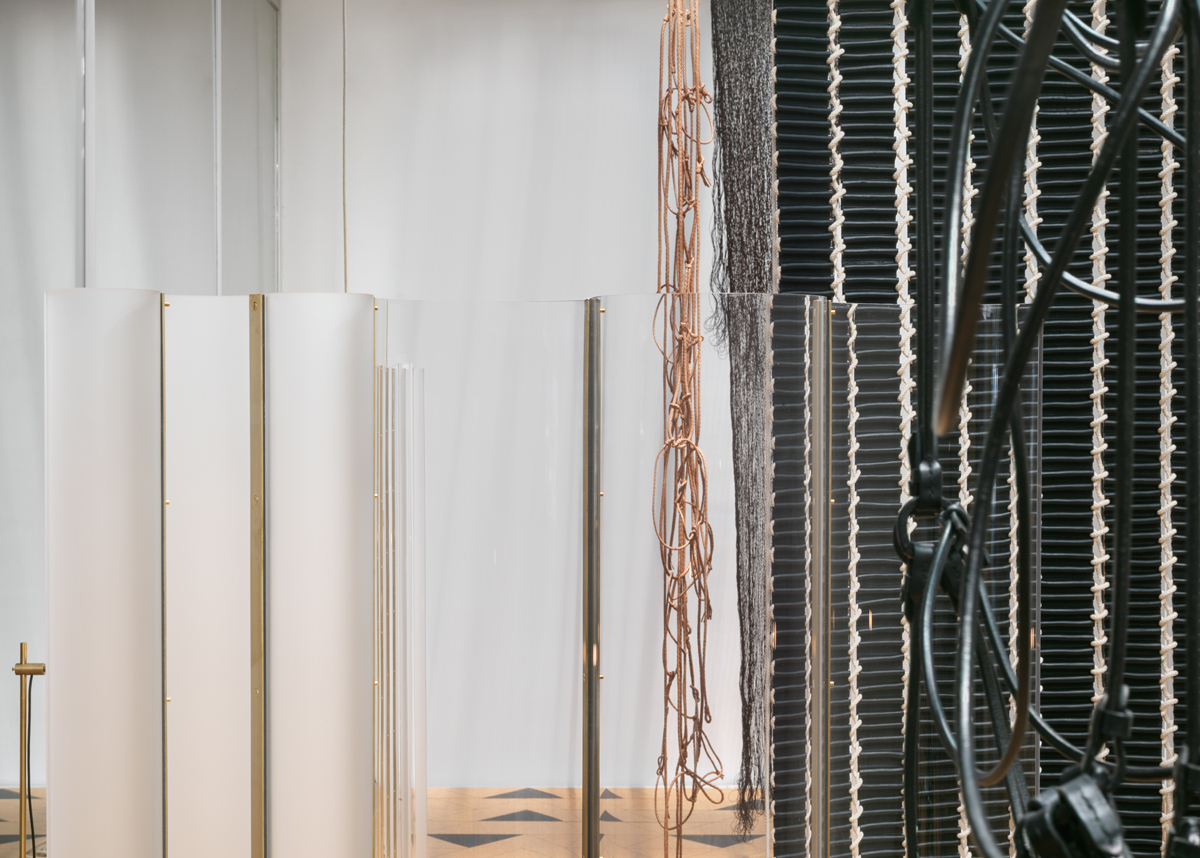
- Bridging the new Snøhetta addition and the old Botta building on the fourth floor, Portuguese artist Leonor Antunes’ New Work installation delves into the legacies of four female designers, architects and artists. Translating their designs in both scale and material, Antunes elegantly fills the space with hanging metal screens, drooping leather grids, ropes and lamps, all situated over cork floors inlaid with brass.
- On the third floor, photographs from the museum’s Campaign for Art, promised gifts numbering over 3,000 artworks in total, are arranged in a thoughtful exhibition titled California and the West. A roughly chronological display charts the evolution of photography in and of the West, from Carleton E. Watkins’ mammoth prints of Yosemite Valley to Larry Sultan’s Homeland series, staged images of day laborers at the edges of the Bay Area’s suburbs.
- And finally, for a museum treatment of the recent technological past, be sure to visit the sixth floor’s Typeface to Interface, a slick display of notable graphic design from the collection. Don’t miss Corita Kent’s ever-vibrant screenprints and Tauba Auerbach’s wiggly ZS Letters, an alphabet of 3D-printed steel.
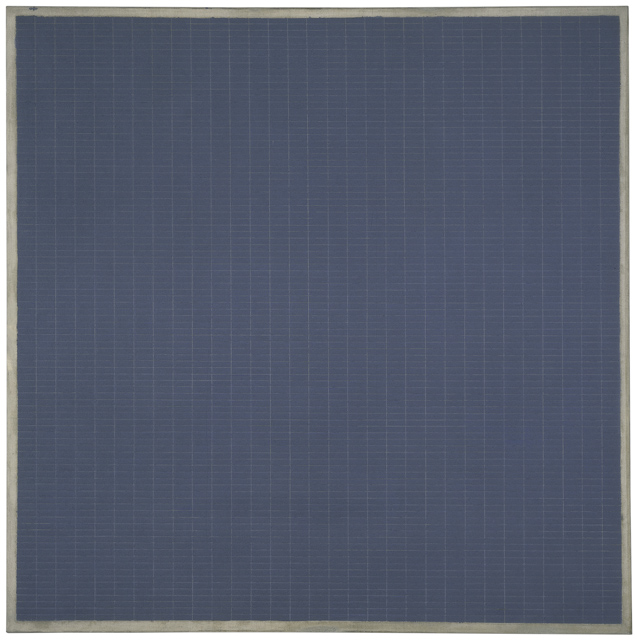
I want to get married in the Agnes Martin “chapel.” How much would that cost?
This sublime gallery of seven Agnes Martin paintings at the very end of the fourth floor’s Fisher Collection show Approaching American Abstraction is ideal for a romantic interlude, it’s true. But according to the museum, it’s not a rentable space. Sorry, art lovers.
I keep hearing about the restrooms. What’s the deal?
Each public restroom on the museum’s seven floors is painted its own intensely bright color. If your eyeballs aren’t already sizzling after staring at a Dan Flavin fluorescent for too long, a quick pit stop to the john will certainly do the trick.
Without spoiling what’s behind those innocent-looking restroom doors, I have some recommendations. If you fancy yourself a weather forecaster, try floor seven. If you miss Prince, try floors six or four. A fan of jewel tones? Floor five is your jam. If you prefer a subtler chromatic experience, opt for floor three, home to the new Pritzker Center for Photography and a Sightglass coffee bar. And if you need a reenergizing hue after hours of art viewing, head down to the second floor.
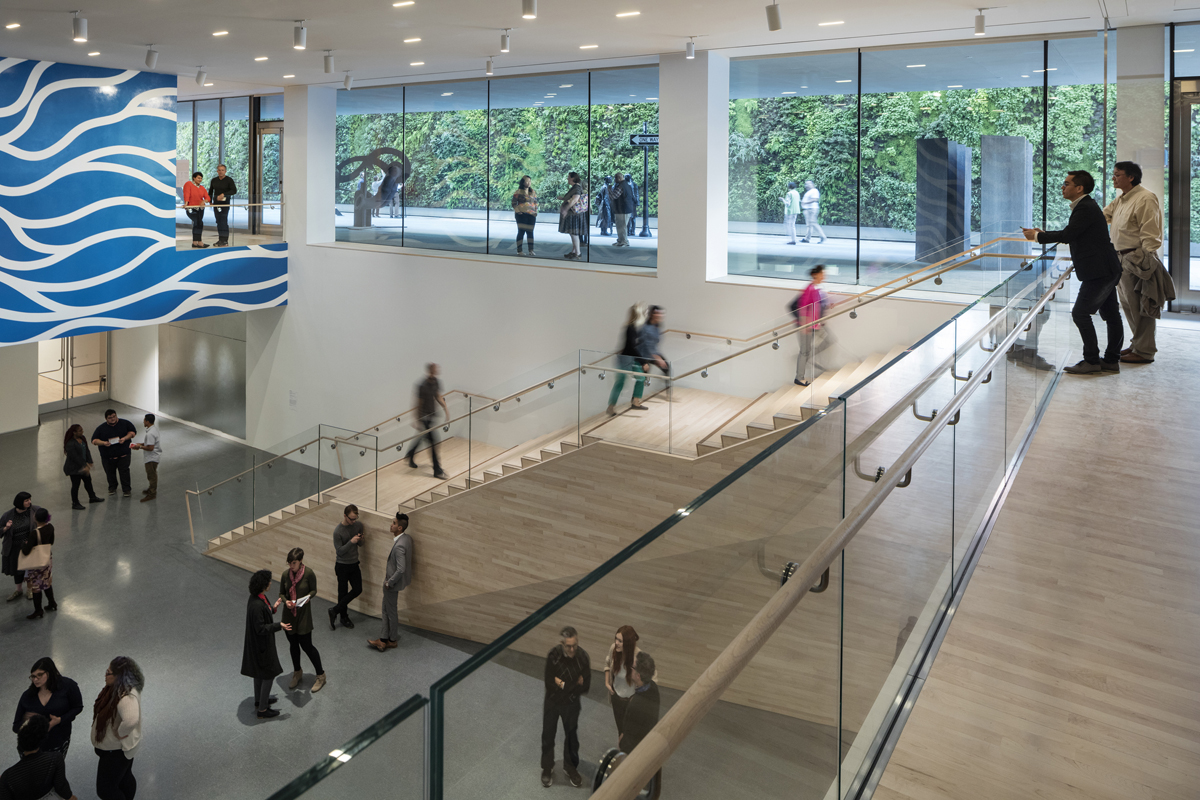
While I’m in there, what does the soap smell like?
Faintly of almonds.
Now you’ve made me hungry. Can I still sip a coffee and eat a slice of Mondrian cake in the museum’s sculpture garden?
Coffee yes, Mondrian cake no. When SFMOMA closed for the expansion, it also ended its contract with Blue Bottle Coffee, where pastry chefs whipped up desserts inspired by artworks on view in the museum.
Cafe 5, appropriately situated on the fifth floor, now offers “flatbreads, fresh organic salads, and artisanal open-faced sandwiches.” This is practical, considering you’ll need carbs to keep a steady pace throughout the expanded museum’s 170,000 square feet of gallery space.
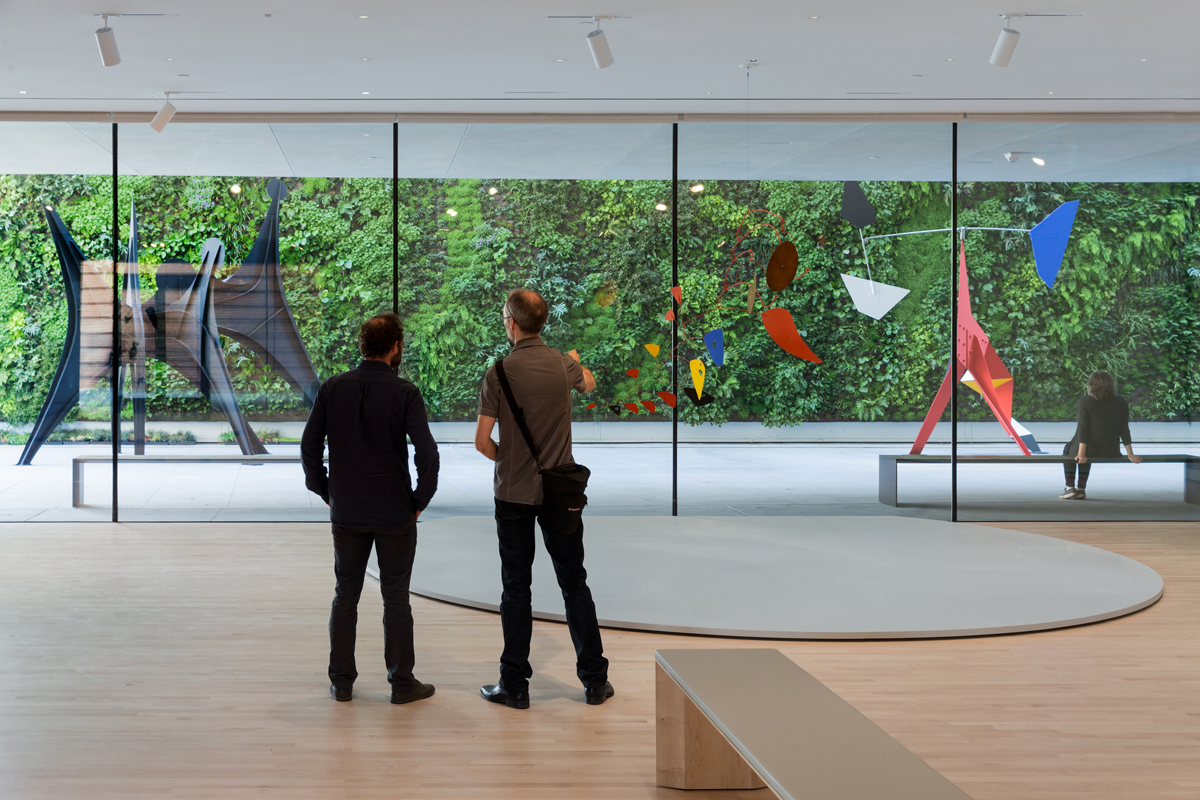
How can I make the Calder mobiles move?
Visitors must maintain an 18-inch gap between themselves and all artwork. Less obtrusive than wire triplines or motion-activated warning beeps, the museum’s new safety barriers jut out from the walls under paintings and create broad islands of inaccessibility beneath the suspended mobiles in the third floor’s Alexander Calder: Motion Lab exhibit.
Without air circulating through the gallery, there is no motion in the Motion Lab, an exhibition of five decades of Calder’s playfully balanced sculptures. Squeezing a fireplace bellows or waving a giant palm frond would likely fall under Grounds for Immediate Ejection, but a suggestion that totally didn’t come from me is to casually open one of two doors to the outside, thereby allowing SOMA’s rowdy breezes to lightly jostle the air indoors.
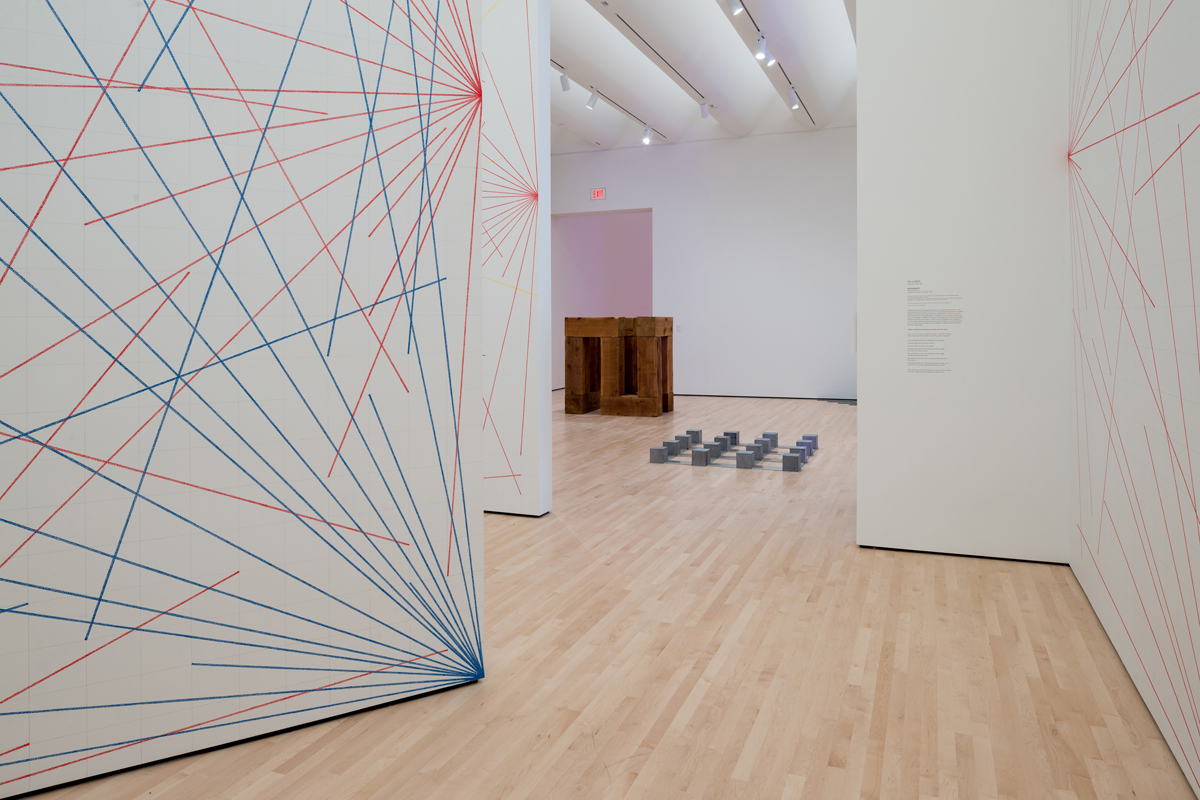
I’m on the fifth floor and I’m starting to notice a pattern amongst the wall labels. How many female artists are represented here?
The Fisher Collection show Pop, Minimal, and Figurative Art contains work by exactly one lady, Coosje van Bruggen, sharing a wall label with her husband Claes Oldenburg for their oversized tie and apple core sculptures. Similarly, in the Fisher Collection’s British Sculptors grouping, a lone Barbara Hepworth stands next to a window facing Third Street, enjoying the room’s new sunlight. On the way to the sculpture garden, you’ll see Aarde, Claudy Jongstra’s woolly commissioned wall installation. And outside, Ursula von Rydingsvard’s knobby cedar sculpture Czara z Babelkami towers over the patio.
So the short answer is, out of 32 artists and 95 artworks: four.
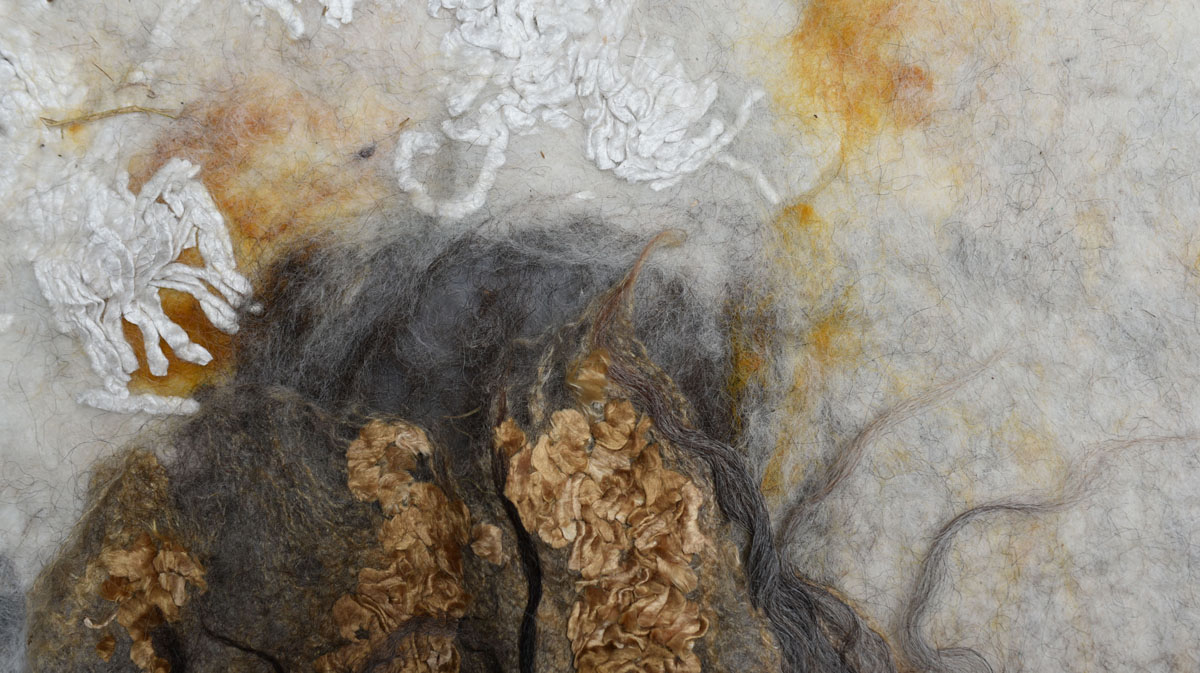
Will future exhibitions include a more diverse representation of modern and contemporary artists throughout the museum, and not just in reductive groupings?
My, you’re a nosy one, aren’t you?
I guess the really important thing is posting pictures of my visit to Instagram. What’s the prime backdrop for my #artselfie?
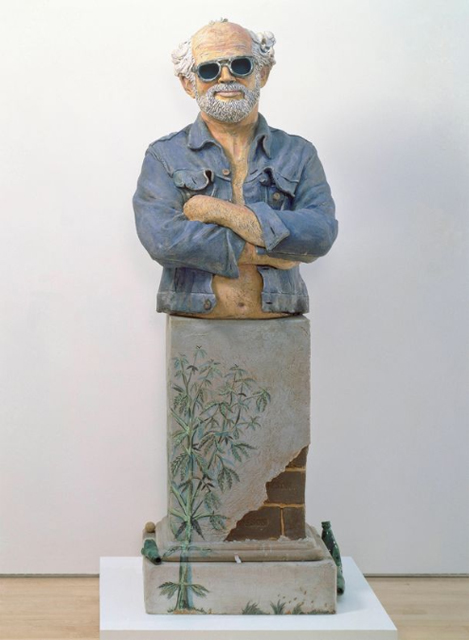
Good news! Photography without flash is allowed throughout the museum. You have to leave your selfie stick at home, but there are plenty of settings for flattering photo ops.
The living wall, situated on the patio of the third floor, is a lush, verdant setting. Outdoor sculptures provide context for your online followers so they’ll know you’re at a museum soaking up culture, not just lounging at a fancy spa surrounded by leafy things.
On the second floor, seek out Robert Arneson’s fabulous California Artist for a buddy pic in the midst of Art of Northern California, where old favorites from the museum’s collection hang out on the Botta side of the building.
And for the shot that’ll baffle everyone, head up to the fifth floor and find Duane Hanson’s uncanny life-sized figure Policeman. Stand beside it, adopt his cross-armed pose, mug at the camera and boom: #art.